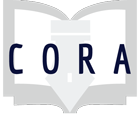Students often struggle developing good research questions. This rubric is used to assess research questions. Students are given a brief lesson on developing a research question that includes a video produced by the University of Cincinnati.
https://www.youtube.com/watch?v=8aYA1ooRce8&index=5&list=PLSWTn4sCw1ZN1B...
Assignments
This lesson is intended as a single session within a major’s research methods course. Rather than using a shorter “scholarly vs. non-scholarly” comparison worksheet, this activity asks students to work in groups to systematically examine a scholarly article in depth, identify and evaluate its various components visually and in writing, and then compare it to a non-scholarly article on the same topic. Groups then report back to the entire class.
In this lesson students view a series of short videos about searching library resources, interspersed with exercises in which they conduct searches on their topics and reflect on what they find and on the research process. (The first two videos and accompanying activities are done outside of class; the third can be done in class.)
This activity/assignment was designed for a first year composition course in collaboration with an English/Writing instructor. It could be used in an information literacy credit course, First Year Experience course, or in another discipline-specific context. The purpose of the lesson is to lay the foundation for students to be able to read scholarly work more effectively and critically.
Made to be an in class activity or a library resource requested by professors for courses. The first page goes with the instruction portion of a class. 'What is a primary source? What is a secondary source? What is a tertiary source?' It takes them through example types of sources, particularly concerned with history courses. The second and third pages require evaluation of a student's primary and secondary sources.
Lesson plan for a 1-hour introductory Communication Studies theory class. Emphasis is on getting students to use the appropriate tool for their information need while considering indicators of authority. Collection of exercises requiring students to do the following: 1) look up background information on a communication theory; 2) chase down further readings; 3) find a scholarly article that applies a communication theory using the ComAbstracts database.
UPDATE: PLEASE USE SIFT & PICK INSTEAD!
For this assignment, students will spend time as a critical media observer - namely, their own uses of media in a 72 hour period.
In this activity, students will work on maintaining eye contact with their audience while giving an impromptu speech. The goal is to stop (or reduce) students' tendency to look at their visual aid during speech presentations.
Students often depend on citation generators provided by databases, library discovery tools, and websites when tasked with correctly formatting their references. However, these generators often make mistakes that students don’t notice. This activity will help students to look critically at the citations provided by citation generators and to find the mistakes. This will both help students learn the citation style of their discipline and to look more critically at seemingly quick fixes during the research process.
